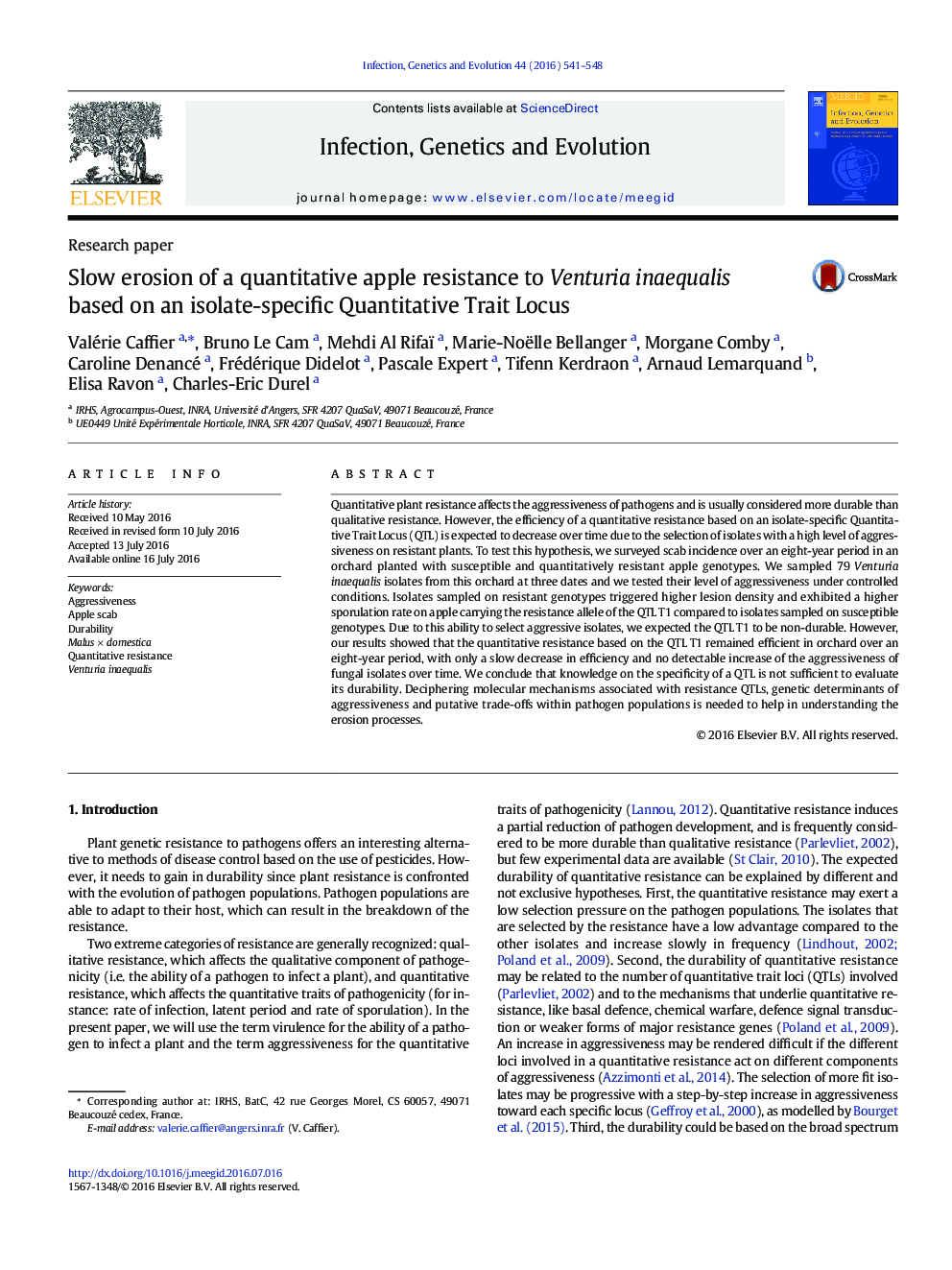| Article ID | Journal | Published Year | Pages | File Type |
|---|---|---|---|---|
| 5908238 | Infection, Genetics and Evolution | 2016 | 8 Pages |
Abstract
Quantitative plant resistance affects the aggressiveness of pathogens and is usually considered more durable than qualitative resistance. However, the efficiency of a quantitative resistance based on an isolate-specific Quantitative Trait Locus (QTL) is expected to decrease over time due to the selection of isolates with a high level of aggressiveness on resistant plants. To test this hypothesis, we surveyed scab incidence over an eight-year period in an orchard planted with susceptible and quantitatively resistant apple genotypes. We sampled 79 Venturia inaequalis isolates from this orchard at three dates and we tested their level of aggressiveness under controlled conditions. Isolates sampled on resistant genotypes triggered higher lesion density and exhibited a higher sporulation rate on apple carrying the resistance allele of the QTL T1 compared to isolates sampled on susceptible genotypes. Due to this ability to select aggressive isolates, we expected the QTL T1 to be non-durable. However, our results showed that the quantitative resistance based on the QTL T1 remained efficient in orchard over an eight-year period, with only a slow decrease in efficiency and no detectable increase of the aggressiveness of fungal isolates over time. We conclude that knowledge on the specificity of a QTL is not sufficient to evaluate its durability. Deciphering molecular mechanisms associated with resistance QTLs, genetic determinants of aggressiveness and putative trade-offs within pathogen populations is needed to help in understanding the erosion processes.
Keywords
Related Topics
Life Sciences
Agricultural and Biological Sciences
Ecology, Evolution, Behavior and Systematics
Authors
Valérie Caffier, Bruno Le Cam, Mehdi Al Rifaï, Marie-Noëlle Bellanger, Morgane Comby, Caroline Denancé, Frédérique Didelot, Pascale Expert, Tifenn Kerdraon, Arnaud Lemarquand, Elisa Ravon, Charles-Eric Durel,
